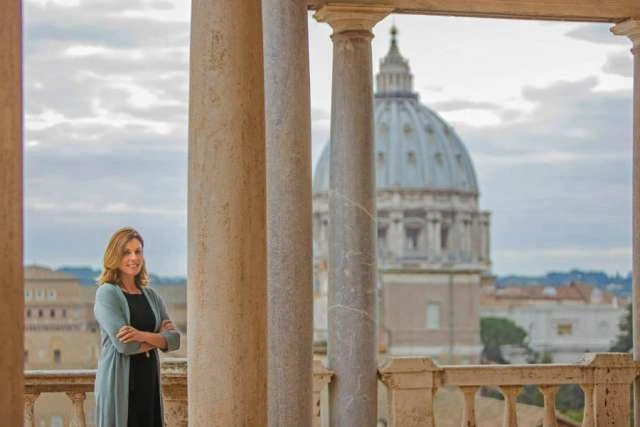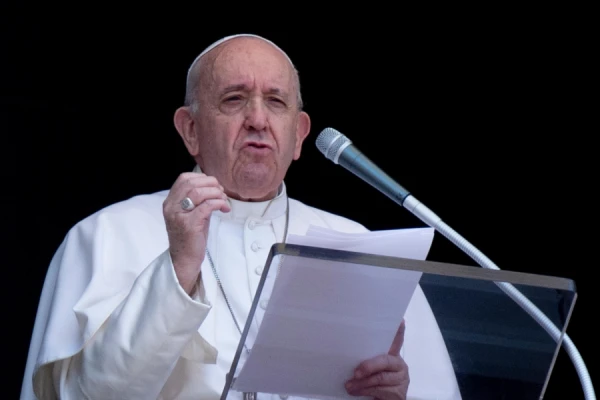
Vatican City, Mar 9, 2017 / 03:02 am (CNA/EWTN News).- Barbara Jatta, the newest director of the Vatican museums, and the first woman to hold the position, said that working with art was a natural path for her to follow – and she can’t imagine a better place to do so.
On her extensive background in art, Barbara Jatta told CNA: “I don't think I chose it.” Her mother and sister are both restorers, her grandmother was a painter and her grandfather was an architect, she said. “All my family is in the art world…”
“So I grew up in art, looking at art, going to museums with my family. It was really something so natural for me to choose this,” Jatta said.
“I don't feel I have a career, I have the privilege of working with what I like. With what I really think is important for me to do and I'm doing it in the best place I can ever imagine.”
Asked what she thinks will be the greatest challenge in her new position, she said bringing “harmony in to this place.” She wants to “give the visitors the idea that they are in a privileged place with privileged people that work here.”
“I mean, all the people working here know that they work for the Pope, they work for a mission, rather than just having a simple work. And I would like to focus on this more and more,” she said.
Another challenge Jatta faces is balancing preservation of the art in the museums with accessibility to the public.
“I do think that it's very important to preserve what we have received from the past,” she said, “and at the same time, sharing it is one of our focuses. So it's important also to share the beauty in what we have here.”
The museums have recently made other changes as well, including launching an updated website at the end of January that is more user-friendly and includes an “Explore” section, where website visitors can view museum content right from their homes.
Expanding accessibility to the extensive collections of the museums, whether through the website or for in-person visitors is a major focus, Jatta said.
“The idea is to let the people and the visitors arriving spread out in the different museums…and so let them go into the different part of the museums that are not as often visited. We have wonderful parts of the museum that visitors generally do not go to, do not visit,” she said.
And the number of visitors to the museums continues to grow. In 2016, six million people visited the Vatican, she said, but that number is predicted to be even greater in 2017.
In Jan. and Feb. of 2017, “we had an increase of 18,000 people in the two months, compared to the other years,” she noted.
The large number of visitors is excellent for the museums, but not always great for protecting the artworks themselves.
Because of this, “we have a very important program for preservation of the entire spaces of the museum,” Jatta said, “which costs a lot in effort and money, but we do think that it's a very important part of our organization.”
Why should someone visit? The Vatican museums are a unique place, she said. For instance, it isn’t just one museum, but in fact many, all joined together. “So it's not only a museum of archeology – you have many other archeology museums in Rome or in other parts of Italy.”
What makes the Vatican museums unique is “the idea of having the different witnesses of the culture, art and faith, that's an important part, a fundamental part of this museum.”
For example, the ethnological museum has more than 80,000 pieces, from different continents, and all witnessing to the faith, she said. This museum is comprised of pieces that were given as gifts to the popes, especially Pius XI.
“But it really is an ongoing museum that is still receiving items from all over the continents and that's probably the most important aspect of our museums. The idea that they preserve witnesses of faith.”
Jatta was vice-director of the museums starting in June 2016, but before that, since 1996, she worked and led the prints section of the Vatican Library. “So I was always an art historian working within the Vatican walls,” she said.
She met Pope Francis while in her former job when she presented him with a work of art for the Jubilee of Mercy. “For sure, Pope Francis is very interested in art,” she continued, highlighting how he brought homeless to visit the Sistine Chapel because “he thought that they would never have the opportunity to see it and this is very important.”
He speaks “about art very often, and the sense that beauty and art link people is something very, very important that he tells us…and it's one of my ideas in leading these museums,” she said.
Mary Shovlain contributed to this story.
If you value the news and views Catholic World Report provides, please consider donating to support our efforts. Your contribution will help us continue to make CWR available to all readers worldwide for free, without a subscription. Thank you for your generosity!
Click here for more information on donating to CWR. Click here to sign up for our newsletter.




Leave a Reply